Hearing Loss or Impairment – Child
What is Hearing Loss or Impairment?
Children born in BC are now routinely screened through the Newborn Hearing Screening Program. This means that hearing loss in children is now detected early and intervention services can begin when the child is very young. It is estimated that 1 in 300 children have a hearing loss detected through this program. Hearing loss can have a significant effect on a child’s speech and language development, so early diagnosis and amplification are crucial.
The impact of the hearing loss on speech and language development will depend on: the severity of the hearing loss, i.e. mild, moderate or severe; if it affects one ear or both ears; if the child is born with a hearing loss or acquires one later in life; the type of hearing loss (conductive, sensorineural or mixed); how early in life the child uses hearing devices to hear sounds in the speech range.
A conductive hearing loss means there is something wrong in the outer or middle ear such that sound is not conducted properly to the inner ear. If there is fluid or infection in the middle ear, then the loss may be temporary or intermittent. A temporary loss like this can be treated with antibiotics or, if the infections are frequent, the child may need tubes to drain any fluid. If the damage is structural, the hearing loss is likely to be permanent. If so, the child will be considered for hearing aids. This kind of hearing loss affects mainly low frequency sounds.
Sensorineural hearing loss means that something is wrong with the inner ear (cochlea) or auditory nerve. This is a permanent hearing loss and the child will likely benefit from a hearing aid or cochlear implant.
Mixed hearing loss is when a child has a temporary or permanent conductive hearing loss and a permanent sensorineural loss. This type of hearing loss will affect the child’s ability to hear all speech sounds.
Sometimes the outer, middle and inner ear all appear to be normal, but the child has a problem in the nerve between the inner ear and the brain (auditory neuropathy or dysynchrony). A child with this problem will have difficulty understanding speech, especially in noisy environments. The audiologist will decide whether to recommend hearing aids or cochlear implant because some, but not all, children benefit from these.
Children who are deaf or hard of hearing need assessment, hearing devices and a range of intervention supports to ensure best outcomes (aural habilitation).
What can professionals do to help?
Audiologists are the professionals who will assess the child using a variety of tests to determine the type and amount of the hearing loss at the time of diagnosis and as the child develops. They will make recommendations for hearing devices (hearing aids, cochlear implant, FM systems) as well as educate and support parents in decisions regarding intervention approaches to help the child communicate effectively.
Speech-language pathologists (SLPs) contribute vital skills to early intervention teams who support babies with hearing loss and their families. The SLP’s role includes helping parents manage their baby’s hearing aids or cochlear implants. Although an audiologist will fit the device and monitor the child’s hearing loss, the SLP plays a crucial role in providing ongoing support to parents. Early and full time use of hearing aids is extremely important in helping the child develop listening skills, receive auditory input and develop early communication skills. This is especially important in infants and toddlers because the first years are the critical years for developing listening skills and learning speech sounds.
Many children with hearing loss (40%) have additional speech, language or learning needs related to their syndrome or medical condition. The SLP is the professional on the team who has expertise in typical and atypical speech and language development and in speech-language intervention to address hearing and additional learning needs. In addition to working closely with the audiologist, the SLP will also work with the Teacher of the Deaf and Hard of Hearing, Auditory-Verbal Therapist or Sign Language Instructor, depending on the communication mode and intervention approach the family has chosen.
For older children, the SLP can assess speech and language and provide recommendations or provide intervention to improve learning outcomes. Some SLPs are now using ultrasound to improve residual speech sound errors.
